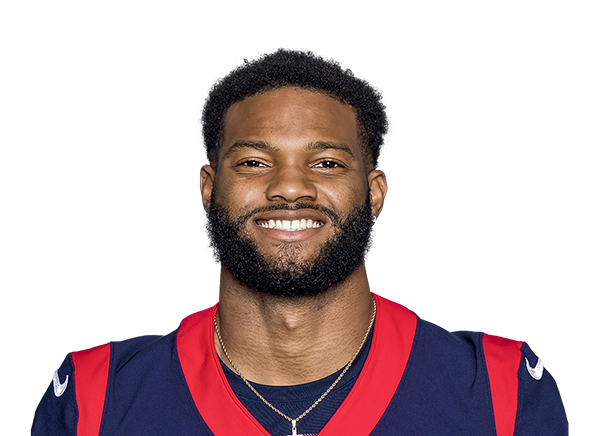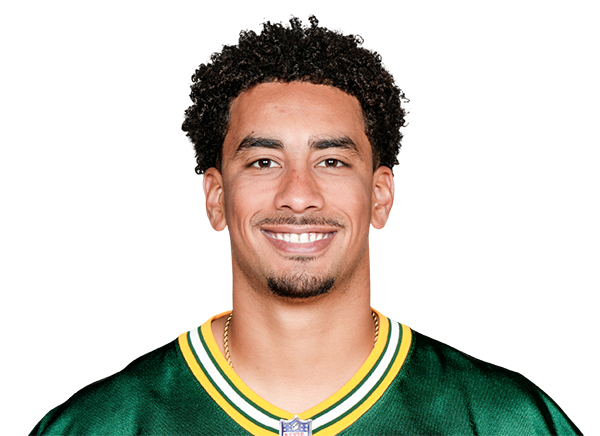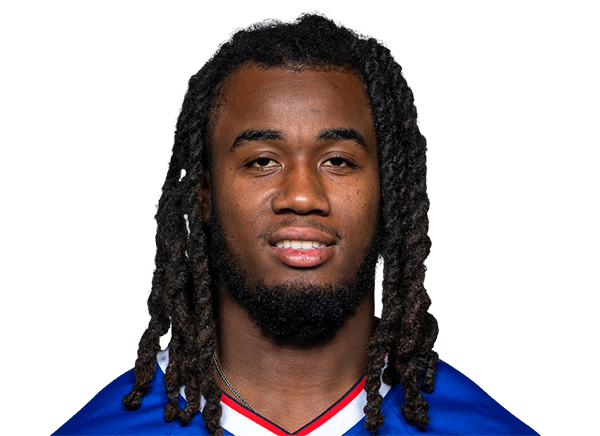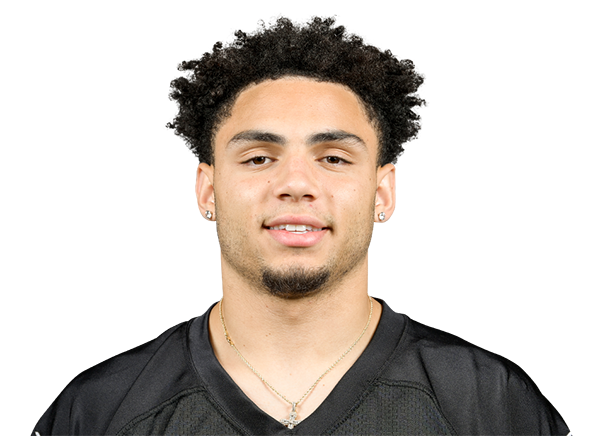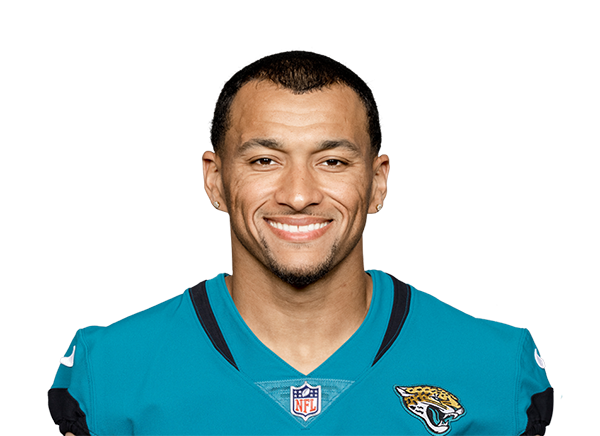Dynasty Fantasy Football Rookie Update: Gabriel Davis, WR BUF
The NFL Draft is behind us, rookie drafts are taking place, and as dynasty owners, we are looking ahead to the upcoming season. In the Dynasty Fantasy Football Rookie Update series, we break down all the incoming fantasy-relevant rookies, looking at their profile and where they fit.
Name: Gabriel Davis
Position: Wide receiver
Pro Team: Buffalo Bills
College Team: University of Central Florida
Draft Status: Round four, 128th overall
VIDEO HIGHLIGHTS
COMBINE REVIEW
- Height: 6’2”
- Weight: 216 pounds
- Arms: 32 1/4″
- Hands: 9 1/4″
- 40-yard dash: 4.54 seconds
- Vertical jump: 35”
- Broad jump: 124”
- 3-cone: 7.08 seconds
- 20-yard shuttle: 4.59 seconds
- Bench press: 14 reps
STRENGTHS
- Tall, heavy build enables Davis to work as both a sideline receiver and a big slot
- Tough at the catch point and doesn’t back down from contact
- More fluid than many jump-ball receivers of his size
- Functional long speed that, combined with size, allows him to win on downfield routes and targets
- Utilizes size and strength to shrug off defensive backs after the catch
- Solid college production — had two breakout seasons and a clear upward trajectory from freshman to junior year, while just turning 21 in April
WEAKNESSES
- Fluid for a jump-ball receiver, but he still has below-average quickness, agility, and explosiveness compared to the wide receiver position as a whole
- Very limited route tree in college — mostly slants and downfield routes — and don’t see it expanding given his lack of short-field athleticism
- Routes are sloppy and lack dynamism; he relies mostly on his size and long speed to separate
- Has an attacking mentality at the catch point, but doesn’t convert difficult targets to catches as well as some other receivers
OPPORTUNITIES
Led by Cole Beasley and John Brown, the Bills’ receiving corps was notoriously small last year. Stefon Diggs raises the average height of their top contributing receivers, but even he is still just pushing 6’0”.
Buffalo has a handful of legitimate big bodies that could emerge, including Duke Williams and Isaiah Hodgins in addition to Davis. Williams totaled just 58 yards on the season before a shocking 108-yard week 17 performance. This was his first season seeing the field after entering the NFL undrafted in 2016. I feel safe in labeling him as just a guy. Meanwhile, Hodgins is a slightly poorer man’s version of Davis as a prospect: His college production, strengths, and weaknesses strongly mirror Davis’s, except he’s slower (with a 4.61 40 time), lankier (two inches taller and six pounds lighter), and was picked two rounds later. He’s a half-year older as well, for what it’s worth.
For that reason, Davis could certainly emerge as the best big-bodied option on the Bills roster. It also doesn’t hurt that his downfield specialty fits well with a quarterback like Josh Allen.
THREATS
Davis could become the Bills’ most reliable big-bodied sideline receiver, but that role could very well be worthless for fantasy owners in the Buffalo offense. After Brown and Beasley in 2019, the Bills’ next highest receiving yardage total was Isaiah McKenzie’s 254 yards… and that was without the target-hogging Diggs even in the picture. Even if he positions himself in front of Williams and Hodgins, Davis would need either one (maybe two) of Diggs, Brown, and Beasley to depart or miss significant time, or an explosion in Allen’s passing productivity, or both, in order to become a worthwhile producer himself.
Of course, before we even get to that question, he’d have to beat out Williams and Hodgins. And, while he looks like he’ll be better than the other two, he has to strongly improve his route running — among other skills — to get there, which is not a given.
SHORT-TERM EXPECTATIONS
For the reasons stated above, I wouldn’t expect anything over 300 receiving yards for Davis in his rookie year, and I would bet on him producing even less than that. Instead of Davis’s own production, I’d be wishing even more strongly for neither Williams nor Hodgins to produce, as that would signal their favor in the Bills offense over Davis.
LONG-TERM EXPECTATIONS
Brown is 30, Beasley is 31, and Diggs is signed to an eight-figure deal with zero dead money as soon as 2021. The established names in Buffalo’s receiving corps could leave quite soon, at which point Davis could step up. If we’re lucky, the Bills could even figure out how to produce considerably more in the passing game by then, either by helping Allen improve significantly or by replacing him.
Looking down the line at that situation, there are a lot of questions and moving parts, so it’s hard to say exactly what to expect from Davis in two to three years. These questions include the level to which the rookie improves, which is one of the most important questions. However, one can reasonably expect there to be some opportunity for him to produce; whether he’ll be able to make use of that opportunity is yet another question.
NFL PLAYER COMPARISON
It’s tempting to look at the clear strengths and weaknesses of Davis’s profile and see Kenny Golladay. However, Golladay was bigger, quicker, and more dynamic. A much more realistic comparison is Miami’s Mack Hollins. Hollins, too, entered the draft as a tall, heavy, and one-dimensional downfield receiver. He was also taken in the fourth round, by Philadelphia, where he struggled to stand out in an extremely crowded receiving corps until being waived in December 2019. He serves as a cautionary tale for players fitting Davis’s skill-set, as someone faced with more competition for production than opportunity, and someone who simply couldn’t progress enough to overcome it.
PROJECTED ROOKIE DRAFT RANGE
Currently 47th in DLF’s rookie ADP, Davis profiles as a late fourth-round pick. Around him are low ceiling tight ends and quarterbacks (Jacob Eason, Albert Okwuegbunam, and Dalton Keene) and promising project receivers with strong question marks about opportunity (Collin Johnson, James Proche, and Quez Watkins). Given that he’s 34th in my rankings, I would advise taking him a little bit ahead of these players. In standard 1QB formats, the tight ends and quarterbacks typically prove to be wastes of roster spots, while the receivers have fifth and sixth-round draft capital — a subtle, but important distinction.
It’s hard to sum up Davis’s dynasty prospects succinctly: He won’t do much of note in his rookie season in all likelihood, but he could be legitimately valuable a few years down the line, highly dependent on his own internal progression and on how his passing and receiving surroundings change in the coming years. Unfortunately, none of those questions can be answered now, and the rest will be answered at different times in the future. But, “a real possibility for production at some point” isn’t the worst way to spend a late fourth-round draft pick.
- Three Deep-Dive-Worthy Wide Receiver Groups after Week Four - October 1, 2024
- 2024 Rookie Drafts: Running Back Tiers Primer - May 10, 2024
- Dynasty Fantasy Football: Surprise Undrafted Players in the 2024 Class - May 2, 2024
















